Stay in touch
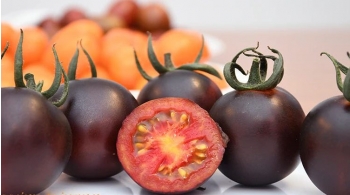
Purple tomatoes are already grown in Ukraine
Earlier in our news, we wrote about the fashionable purple tomato trend in Europe, which won the hearts of consumers in Australia, Belgium, Denmark, France, Greece and Spain.
And now, soon we can try an amazing novelty! Ukrainian farmers have begun to grow purple tomatoes that are fashionable abroad. Writes about this SEEDS.
The unusual tomatoes will be supplied to domestic supermarkets exclusively by TM "GORDI" from Cherkasy region. The trade mark is the brand of the Uman greenhouse plant, where modern European-style greenhouses are now in operation.
The YOOM tomato is distinguished by its rich purple rind and red, almost crimson flesh due to its high concentration of antioxidants, which give these tomatoes their unusual color and positively influence a number of health problems. In addition, the novelty has a large amount of vitamin C, as well as a high content of magnesium and potassium, which makes it a treasury of vitamins and minerals.
In the process of natural ripening on the plant, the fruits acquire a characteristic color, dense consistency and accumulate sugar.
We are already looking forward to trying the trendy tomato!
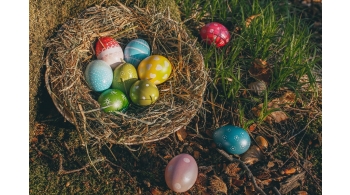
Happy Easter!
Dear friends, congratulations on the upcoming Easter!
We wish that in these great days your hearts be filled with bright feelings of hope and love.
Let your home be filled with comfort, warmth, happiness, and well-being. And the delicate aroma of a delicious Easter cake, bright colors of eggs and loud laughter of loved ones will fill this day with a real miracle and a wonderful mood.
Happy Holidays!
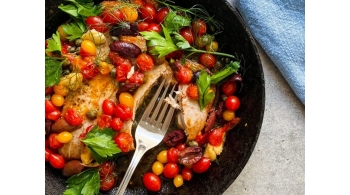
Tomberry - the smallest tomatoes in the world
Tomberry is a unique brand of small tomatoes that was launched into the Australian market and is incredibly popular with consumers. Writes about this HortiDaily.com
Imagine harvesting on a vine with a bunch of tomatoes with over 200 tiny berries waiting to be picked! Tomberry is 100 times smaller than a regular tomato.
Tomberry originates from the Netherlands, but quickly spread to many other European countries such as Poland, Turkey and Spain, and also found its way to North America, Canada, as well as Mexico and Israel.
The tomato is used as a unique new ingredient in 5-star gourmet dishes and in all kinds of hot dishes like Spanish paella, where it not only adds flavor to a textural splash after consumption, but also a splash of color to any dish. It is used in soups, risottos and pasta dishes and is very popular in Mexican cuisine. And already excited not only high-class chefs in Australia, but also moms, dads, gourmets and, more importantly, children.
Would you like to try these mini tomatoes? We are sure that it is very tasty!
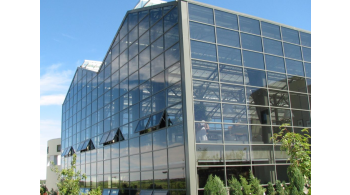
Wide-range greenhouses
There are several types of industrial greenhouses. One of them is wide-span greenhouses.
Structurally, a wide-span greenhouse differs from Venlo in its span width, roof and ventilation. The span can be up to 12 m, while it has one skate for the entire width of the span. A wider span creates more air buffer, resulting in a more pleasant climate. These greenhouses are used for garden centers and other architectural masterpieces.
It is worth noting the main disadvantage of this type - it is much larger and heavier than the Venlo greenhouse.
The advantage of this kind of greenhouse is the minimum of shade. This design offers almost endless possibilities for realizing specific wishes for greater light and air penetration. Ventilation with solid windows ensures maximum fresh air intake. One-way or two-way opening of windows is especially suitable for mosquito nets.
The wide span greenhouse is the ideal solution for many types of crops. Large column spacing provides more space for plants and automation.
If you have any questions, we will be happy to answer them!
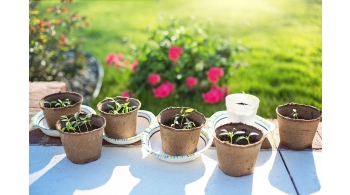
How to grow pepper seedlings
Pepper is a source of vitamins and useful elements. A crispy vegetable with a rich taste and bright colors will perfectly complement your plate. At the same time, pepper is a rather capricious culture. To grow peppers in a seedling way, you have to work a little.
The time of sowing pepper seeds depends on the conditions and place of planting seedlings. In general, we recommend using the following rule: sowing is carried out 60 days before disembarking to a permanent place, if a pick is carried out, and 50 days without it.
The preparation of the correct and high-quality soil is one of the important stages in the cultivation of any crop. It is recommended to sow peppers for seedlings in loose and light soil. You can use ready-made seedling mixes or you can buy them at any garden store.
Usually, seed producers decontaminate them even before the start of sales, therefore, when buying professional seeds, decontamination can be skipped.
Pepper does not tolerate picking well, so it is most convenient to sow directly into separate pots. Place the seed to a depth of 1-2 cm and sprinkle with a layer of soil, press lightly. Then the containers with seeds are moistened and covered with foil or glass. When the seeds begin to hatch, the film must be removed and transferred to a warm and bright room. If necessary, install additional lighting lamps.
Pepper seedlings need a temperature of at least 20 ° C. And for the plants to grow quickly, provide them with 24-25 ° С. But it is worth remembering that growing too fast can weaken the stem and leaves.
Before transplanting seedlings to a permanent place, the plants must be hardened. It usually takes about two weeks to quench. At the time of hardening, the seedlings should be 20–25 cm in height.
On the first day, open the window where the plants are for 1 hour. Increase the duration of the procedure up to 8 hours every day. Immediately before planting, the plants are taken out on the porch, and 1 day before transplanting - overnight, protecting from too cold air. During the period when you transplant seedlings to a permanent place, the average daily air temperature should be 15 ° C.
Well, that's all, the seedlings are ready to be transplanted to a permanent place!
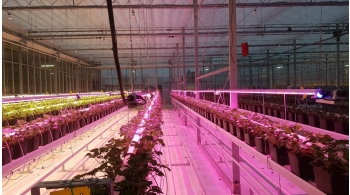
LED lamps in the greenhouse
Light is the main source of energy for plant growth. We have already said that the main types of lamps that are used for greenhouses are: sodium, LED, metallogenic, fluorescent, incandescent and high pressure mercury lamps. Which one to choose - it all depends on the height of the greenhouse and the type of crop grown.
LED lamps are one of the most common types and the most promising for today, because with an identical amount of light with NLVD, LEDs consume 40-50% less electricity, and their service life is more than 50,000 hours. That's about 15 years of use.
The main advantage of LEDs is their service life and relatively low energy consumption, while their relatively high cost is the main disadvantage.
Therefore, today there is a certain compromise in the use of LEDs, it is expressed in the separation of crops and trends in the use of these lamps.
For lettuce and greens, which require relatively low light levels, many greenhouses are gradually adopting full LED lighting. Green mass has shown the best results for LED lighting applications today.
The use of LEDs for growing flowers is also gaining momentum, especially for roses. European farms are increasingly replacing NLVD with LEDs, selling the first to Poland, Ukraine and other countries where supplementary lighting in greenhouses is not so common
For growing vegetables - a combined lighting system "interlight". The principle of interlighting is to provide two levels of illumination - one on top (classic placement) for supplementary lighting to the tops of plants, so that the plant continues to grow "up towards the sun". The second level of illumination is at the plant roots. It is an excellent alternative to 250W and 400W NLVDs, which generate excessive heat near the root zone and “dead zones” that form between the luminaires.
If you want to grow your products all year round - think over the right lighting system in the greenhouse or contact us for help.
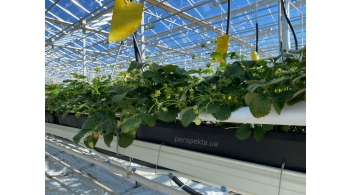
For experience - all over the world!
The Perspekta company is growing and developing every day. We strive for new knowledge, so we are happy to meet with partners to gain invaluable experience.
Recently we visited the DORORS greenhouse facility in the Republic of Belarus, which is one of the largest producers of agricultural products in greenhouses. The volumes are impressive, on 50 hectares "DORORS" produces vegetable and berry products using Dutch technology in hydroponics.
We paid special attention to the cultivation of strawberries in the complex. Plants are grown on hanging trays with automated drip irrigation. Each plant is supplied with computer-controlled droppers that supply the shoot with nutrients and water in the right amount and at the right time. Equipment for feeding plants with carbon dioxide has been installed on the areas of the entire greenhouse.
Collecting the best world experience in growing plants in greenhouses, we can offer the best solution just for you!
Do you want to try yourself in the greenhouse business? - sign up for a consultation with our specialists.
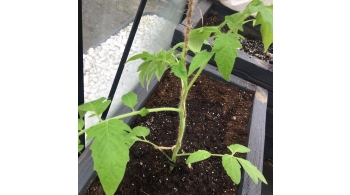
Favorable days for sowing on the lunar calendar
According to an UNIAN correspondent, in order for plants to sprout strong and healthy, when planting they need to take into account the phase of the Moon. Some days of the lunar cycle are considered unfavorable for working with plants, while others are considered productive.
Planting tomatoes is usually carried out through seedlings - first, the seeds are sown in a box, box or cup and left at home in a warm place. After 2 months, the seedlings are transplanted into a greenhouse or soil in the garden.
Favorable days for sowing seeds for seedlings:
- in March: 4, 7-9, 12-14, 17-25;
- in April: 3, 5, 8, 13-22, 25-28.
Favorable days for planting seedlings in the ground:
- in May: 2, 5-7, 12-17, 19-22, 24-26;
- in June: 2, 3, 7, 8, 15-25, 15-25, 29, 30.
And we have already transplanted tomato and cucumber seedlings to our greenhouse.
Additionally, heat with warm glass and a heat fan in the evening. Also installed professional LED lamps for lighting in the greenhouse.
We are waiting for the first harvest!
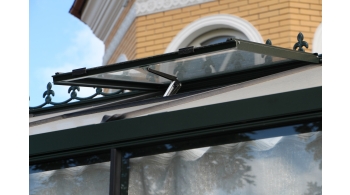
Automatic window opening
When ordering a winter garden, we always offer our customers a choice of windows with mechanical or automatic opening. Most choose automatic ventilation, for good reason!
What is automatic opening and how does it work?
Everything is very simple. When the temperature in the greenhouse rises, the piston opens the window, and vice versa - when the temperature drops, it closes. At the heart of the automatic opening is the expansion of liquid or oil when heated. This helps to regulate the temperature and increase air circulation in the greenhouse.
Usually, for winter gardens perform the function of ventilation of the upper windows, installed on one or both sides of the ridge of the roof of the greenhouse, the side windows-Louvre, as well as doors.
Agree, the constant opening of windows manually - it's quite inconvenient, especially when the greenhouse is high. So choose the best solutions together with Perspekta, because we know how to add comfort to your life!
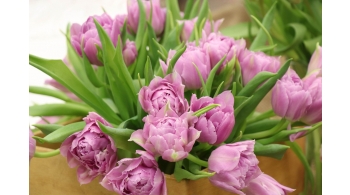
Harming Women!
Harming Women!
On behalf of the Perspekta team, we congratulate you on the upcoming holiday of spring and beauty - March 8!
Dreams and hopes come to life with the gust of spring wind and the aromas of snowdrops. May your paths of life be filled with flowers, may your charming eyes shine with joy, and hot hearts always be filled with love. And no matter what the weather outside, let your heart be light and clear from the attention and love of friends, family and loved ones. Feel like a queen on the holiday of March 8, and stay with her forever!
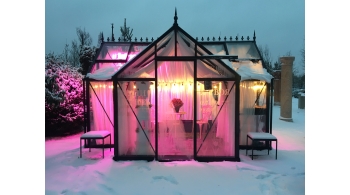
What is DLI and why is it needed
Additional lighting significantly improves the quality of light for crops and can have an extremely positive impact on crops. Light doesn't just control light levels, it can control temperature, minimize stress in plants, and optimize photosynthesis. This is where DLI comes in.
DLI is a photosynthetically active volume of light, light that has a direct effect on plant growth and yield quality. It has become an important tool for manufacturers because DLI has to be very careful. This indicator may vary depending on the season, time of year, length of day and location.
Growers need to balance many factors to ensure their plants receive optimal lighting for optimal growth and quality. Daily Light Integral (DLI), a concept that has been around for several years and is becoming increasingly relevant, helping manufacturers improve the use of supplemental lighting.
DLI has a great influence on the growth, development, yield and quality of plants. The result is that plants receive optimal light for their growth cycles and needs. This can affect the growth of the roots and shoots of the seedlings, as well as the thickness of the plant stem or the number of flowers.
Are your greenhouse plants getting enough light? During periods of early spring, late autumn, as well as cloudy days - take care of additional lighting. If you need help, just contact us. We will find the right lighting system!
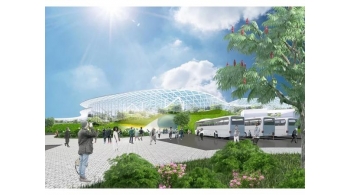
The largest greenhouse in the world will entertain Chinese tourists
Greenhouses have already entered our lives so much that they are used not only for their main purpose - growing plants.
For example, in China, the Eastern design bureau designed the largest greenhouse in the world. Its main function is to attract tourists and for their entertainment. The area of the object will be 15 hectares, and it is planned to build it in China, Hebei province, designboom.com writes.
It will be a huge botanical garden, located in the valley between the hills 280-310 m high, and should attract billions of visitors.
The 15-hectare valley will be planted with trees and other flora from Hainan Island. Everything will be covered with a glass dome. Exhibition centers, conference halls, shops, sports and even residential complexes will also be created here. A real city in a greenhouse!
“We use the primary form of the valley to create a greenhouse. The most beautiful forms are created by nature itself, ”say the developers.
And they add that the construction will use methods that were not previously used in architecture.
Indeed, the future project is impressive, we wish you success!
And the most interesting news here, follow our updates!
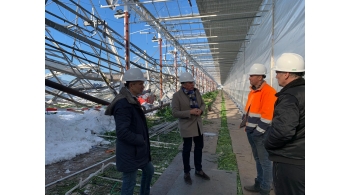
Greenhouses in the Netherlands collapsed due to snow
February this year turned out to be very snowy and frosty. The result of this bad weather was the multiple destruction of glass greenhouses in the Netherlands.
Several Dutch growers have been hit hard by the snow and are currently working hard to save their crops.
And all because in Holland they do not use underfloor heating of greenhouses, and the snow that collects on the roof gives an incredible load on the glass.
It is good that European countries insure their greenhouses and more than 200 producers have already reported damages to the insurance company.
In our Perspekta projects, underfloor heating is necessarily provided in order to avoid such unpleasant situations. Therefore, if you want reliable and durable structures - contact us!
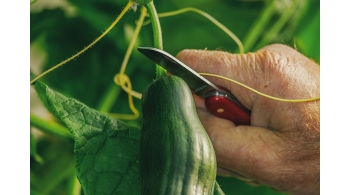
New harvest of Ukrainian cucumber
We love fresh vegetables very much and it is already impossible to imagine our daily diet without them. One of the leading vegetables on store shelves is the beloved cucumber.
Representatives of Ukrainian greenhouse plants promised that a new local greenhouse cucumber will appear on the market this week.
Greenhouse producers hoped that the new season could begin at the end of January. But the timing has shifted slightly due to a sharp drop in average daily temperatures, which slowed down the maturation of cucumbers in stationary greenhouses.
Today, imported products from Turkey are still in the lead in our market. Prices for Turkish cucumber are still stable at 34-42 UAH / kg ($ 1.21-1.49 / kg). At the same time, when compared with last year, at the end of January, a Turkish cucumber in Ukraine was on average 42% more expensive than at the moment.
It should be noted that last year Ukrainian greenhouse plants with a new turnover of cucumber also entered the market in early February. But, at the same time, prices for local greenhouse cucumbers were quite high, 70-75 UAH / kg ($ 2.49-2.66 / kg).
We wish all Ukrainian greenhouse plants a good harvest! We also remind you that Perspekta is a reliable supplier of European greenhouses, we can offer the best greenhouse solutions.
Source of information EastFruit.
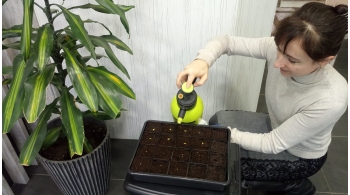
We are preparing for the new season
We are already preparing for the new greenhouse season and have sown seeds for cucumber and tomato seedlings.
The previous tomato harvest pleased us until December, and now it's time to take care of the new one!
Sowing was carried out to a depth of 1-2 cm. To obtain friendly shoots, the substrate temperature should be 24-25 ℃. For better germination of seeds and high-quality removal of the seed coat from the cotyledon, we used a film, which covered the cassettes.
After receiving 20-30% of the "knees", we will remove the film and at a humidity of about 80-90% turn on the backlight.
It is important to pay attention not only to the climate in the greenhouse, but also to plant nutrition, during growing seedlings. With the correct composition of the nutrient solution, it is very important to know the electrical conductivity (EC) of irrigation water. The optimal EU irrigation water for cucumber cultivation is 0.4 - 0.7 mSm. That is, the lower it is, the more useful salts can be available to plants.
After the release of the first true leaf, the plant begins to assimilate the nutrients in the substrate. To do this, it is recommended to apply fertilizers for balanced plant development.
It is also important to water properly. Seedlings need to be watered as needed to make the root system "look" for water. With proper watering, the entire volume of the pot or cassette is filled with the root system.
Are you already planning to plant seedlings?
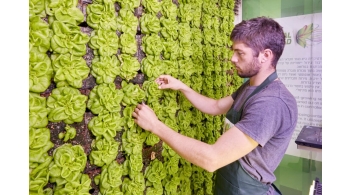
Vertical walls with green crops will appear in Ukrainian supermarkets
One of the Israeli startups, Vertical Field, has developed a vertical farming system and signed an agreement with Moderntrendo S.R.O, an international agricultural distributor, to locate its facilities in supermarket chains throughout Ukraine. EastFruit reports.
Vertical Field has been implementing a pilot project in the national Varus supermarket chain since the beginning of 2021, and then plans to expand to other networks. Varus. Vertical Fields consist of individual blocks of plants that can be rebuilt as desired to grow local vegetables. This installation is suitable for growing vegetables in shops, offices and apartment buildings or anywhere in urban areas where there is little space but many walls.
The main thing is that the products grown with its help do not contain pesticides and produce less waste than traditional agriculture, and use 90% less water.
Vertical farms are modular and mobile with automated crop management and a sterile environment that requires much less contact with humans. The company claims that it currently offers crops such as lettuce, basil, parsley, cabbage and mint, all at competitive prices.
"One of the discoveries made during the COVID-19 crisis is the need to develop solutions that will allow city dwellers to access healthy food with minimal human intervention and without dependence on transportation and delivery from remote locations," Guy said. Elicur, CEO of Vertical Field.
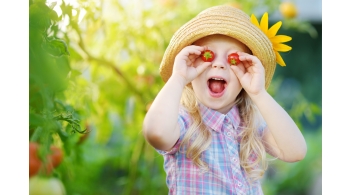
Sale on standard models of conservatories from Perspekta
Hurry up to order a standard winter garden model before February 27 and get a 12% discount!
Don't miss the opportunity to purchase your dream greenhouse at a bargain price.
Aluminum greenhouses covered with tempered glass with automatic windows. Powder painting, black or green - at your choice.
The cost of the greenhouse includes installation, as well as delivery within a radius of 50 km from Kiev.
Grow in your own greenhouse and take care of your health!
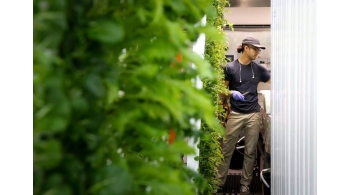
Will Musk's latest technology change US agriculture?
The Square Root company, which is owned by Kimbal Musk, brother of the famous Elon, promotes and develops new technologies for growing food in vertical farms placed in containers.
Kimbal plans to feed the whole world, but will do it in the style of Silicon Valley, writes ForumDaily with reference to the New York Times.
Kimbal believes in organic "real food" to literally and figuratively feed consumers, farmers, the US and the planet.
He intends not only to create innovative vertical farms throughout the country, but also to develop an entire infrastructure for creating "real food": training centers, promoting a new philosophy of nutrition, venture programs, special accelerators.
His non-profit organization has set up 425 educational gardens in kindergartens and schools to help children understand how "real food" comes from a young age. Musk says scalability is important to any business. All the previous companies that tried to promote the idea of good food didn’t get enough results, because they couldn’t scale their model, and he is confident that he can.
10 businessmen have already received training on working with container farms and promoting grown products on the market (they were selected from more than 500 submitted applications). Square Root is now preparing to recruit new students.
Each accelerator participant received from the company a shipping container with vertical systems for growing plants, irrigation systems and a set of blue and red LEDs, and learned how to harvest from all this. According to Kimbal Musk, such containers will fill cities and be an important source of food.
The farms are arranged in steel shipping containers covering an area of 30 square meters. Inside there are four parallel walls with cells filled with fertilized water. Greens and herbs grow in these pockets, which are illuminated by blue and pink LEDs. In such a transport container, it is possible to grow up to 50 thousand heads of lettuce per year and get a harvest commensurate with a field of 0.4 hectares.
The container contains sensors that output readings to the control unit. This makes it possible not only to monitor all the parameters of the environment, but also to set the necessary ones. Here you can create both a tropical climate and conditions of the northeastern United States.
The Finnish company Exsilio Oy is developing container farms. The 13-meter containers she created contain several shelves with beds for growing vegetables, herbs and leafy greens. The farm only needs water and electricity to run, so it can be installed next to a restaurant, shop or close to residential buildings.
Upon release, Square Roots entrepreneurs have adopted different business models. Some sell vegetables to offices, while others grow produce for residents of poor areas. Some are working on engineering solutions for innovative farming, such as lighting and data analytics. Square Roots recently raised $ 5 million in seed rounds. With this money, the accelerator plans to build large campuses with container farms in several cities in America.
Square Roots hopes to reach 20 cities by 2020. The ideology of the program is based on the creation of a business that improves the living conditions on the planet.
Vertical farms are becoming an American trend. The largest vertical farm in the world, AeroFarms, was built in Newark, New Jersey. At the end of 2015, Gotham Greens opened the world's largest indoor farm in Chikago.
But these developments also receive their share of skepticism. The main point that lends itself to criticism is that vertical greenhouses consume a lot of electricity. Square Roots are trying to tackle this problem as well, exploring the possibility of switching to solar energy.
Vertical farms are environmentally friendly, use less space, are resource efficient and produce crops year round. At the same time, technologies have already been created that provide vegetables with a rich taste even in winter.
Interesting? Follow our news!
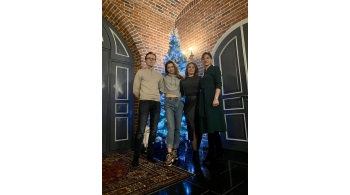
Happy New 2021 year !
Dear Friends!
Perspekta team wishes you a Happy New Year 2021 and Merry Christmas!
We wish you joy, bright hope in your soul and good luck on the way to the realization of your cherished desires!
2020 was a year of difficult and important decisions. However, it made everyone bolder and more determined. Despite all the difficulties, this year we have taken many steps to implement a large number of projects.
We can confidently say that Perspekta is growing every year: both in the team and with each new client who becomes an integral part of our Family.
Together with the new greenhouse, each of the Perspekta employee gives you a piece of his soul. Starting from a phone call to our manager and getting advice, project development and visualization of a design engineer who will help you see a "live picture" of the future greenhouse and planning of industrial projects together with a specialist with many years of experience.
Together we work for the result for the sake of a happy smile for our client:
“... My beautiful greenhouse, how long I have dreamed of it! I have never worked with such a great company as yours", one of our clients Natalia replied.
We, in turn, endlessly grateful for such excellent reviews, we are doing a great job together with you! We have a lot of ideas and a great desire to make your dreams come true in the coming New Year!
Your Perspekta team!
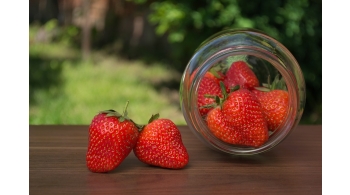
Technology is ahead of humans when growing strawberries in greenhouses
Technology has surpassed farmers in growing strawberries in the first Smart Farming competition hosted by Pinduoduo, China's largest technology agriculture platform.
Four groups participated, using the latest technology to automate greenhouses. As a result, an average of 6.86 kg of strawberries was produced, which is 196% more than the average of 2.32 kg for the three groups of traditional producers.
According to the organizers of the competition, technologists also surpassed farmers in return on investment by an average of 75.5%.
Great results, right?
The pursuit of smart agriculture is part of a broader goal of helping China realize the full economic potential of its vast agricultural resources. One of the first steps to improve productivity is to digitize the entire value chain, from manufacturing to transporting and selling food.
Precision farming technologies can help improve yield at the end of the production cycle and reduce food waste by reducing supply and demand imbalances. The organizers will consider the possibility of promoting technology developed by the teams in the competition.
The Smart Farming competition has inspired many farmers by showing the potential market demand for smart farming solutions.
Sourse of information https://www.hortidaily.